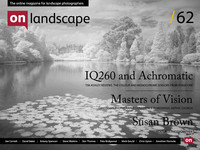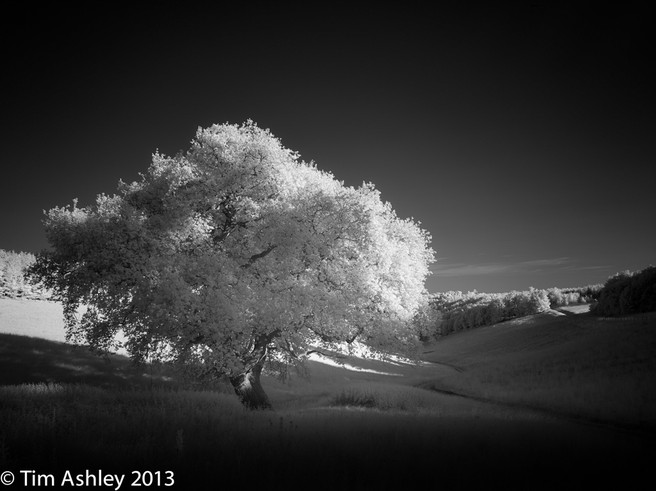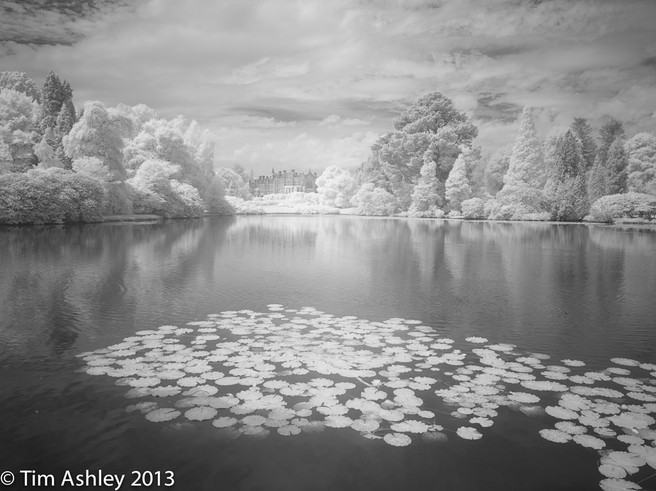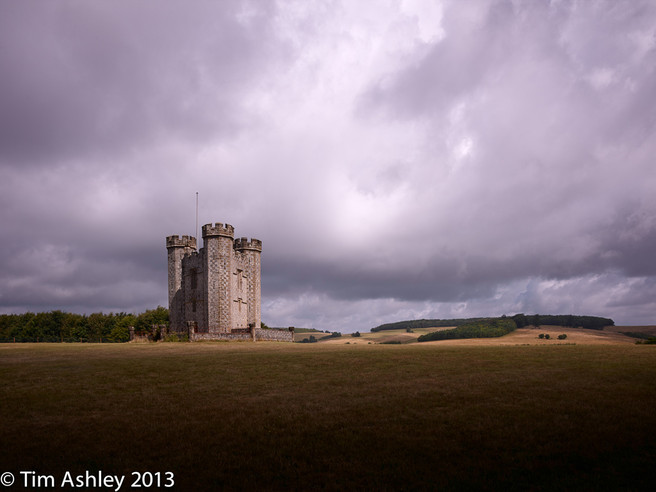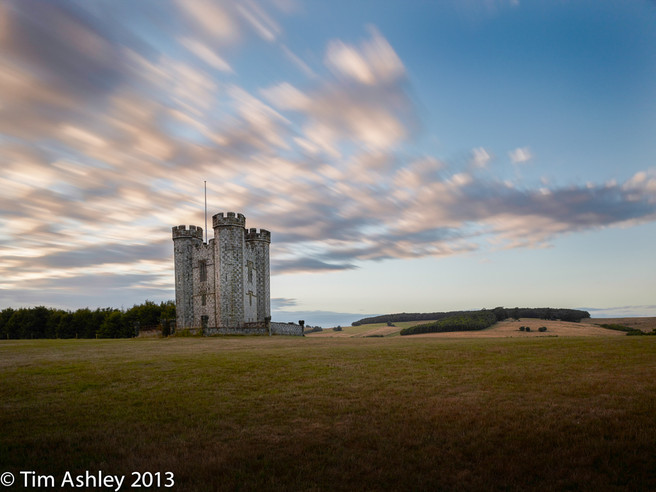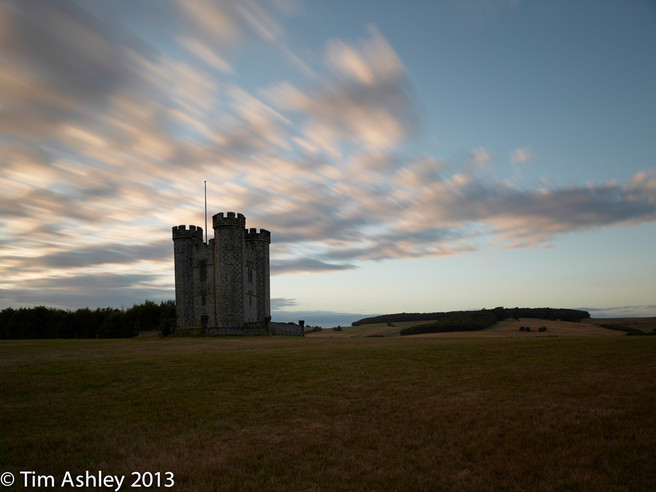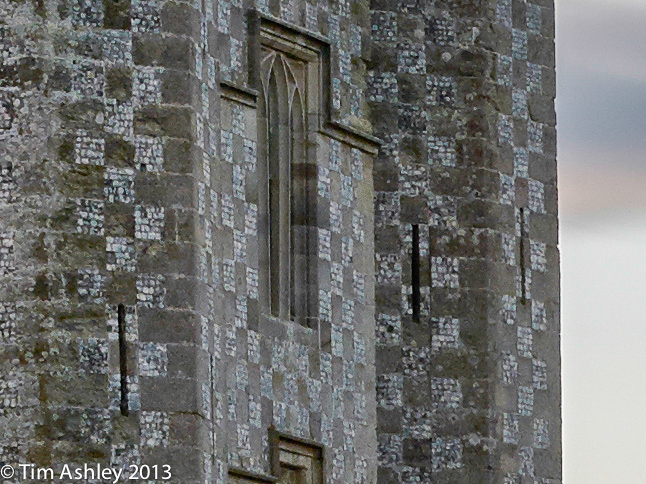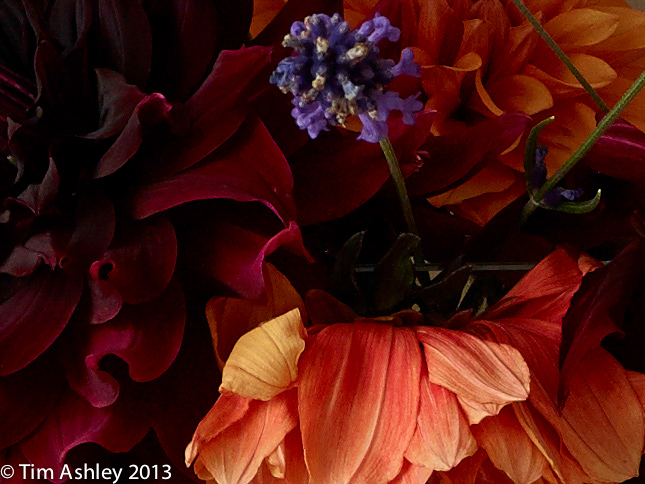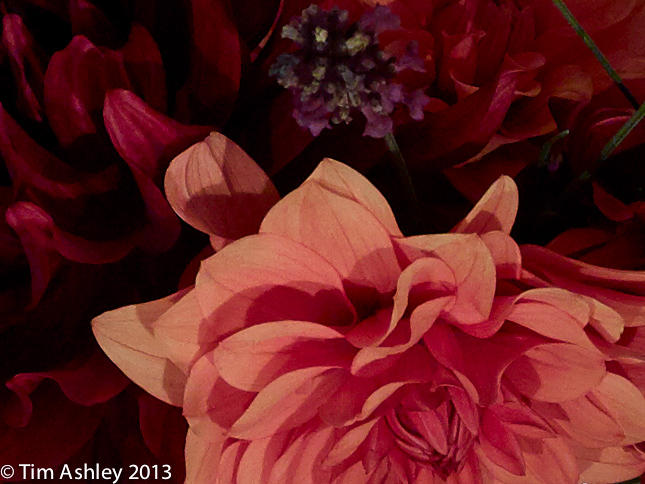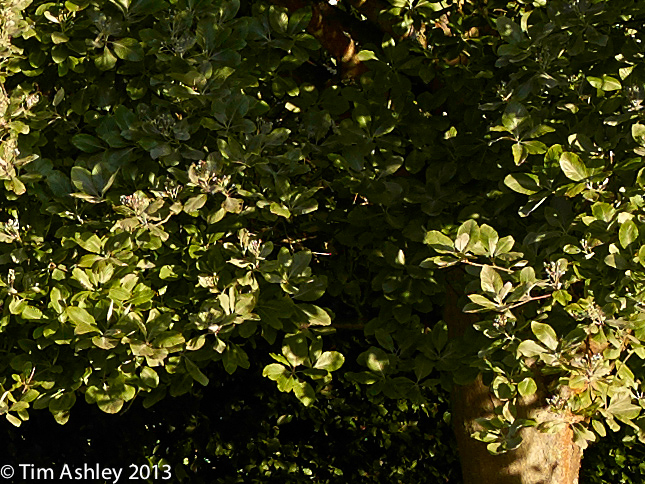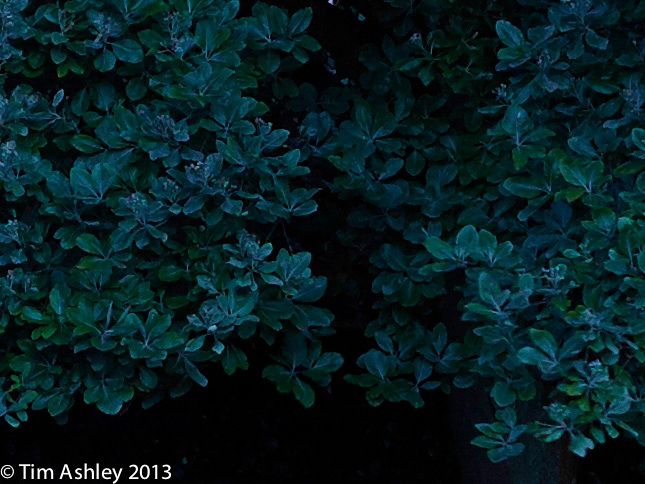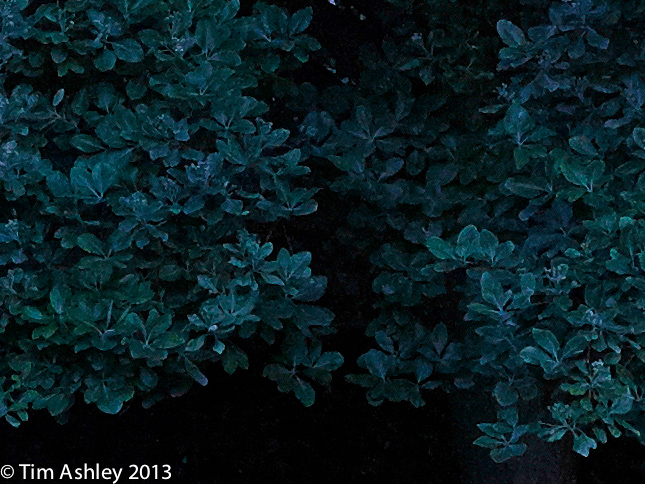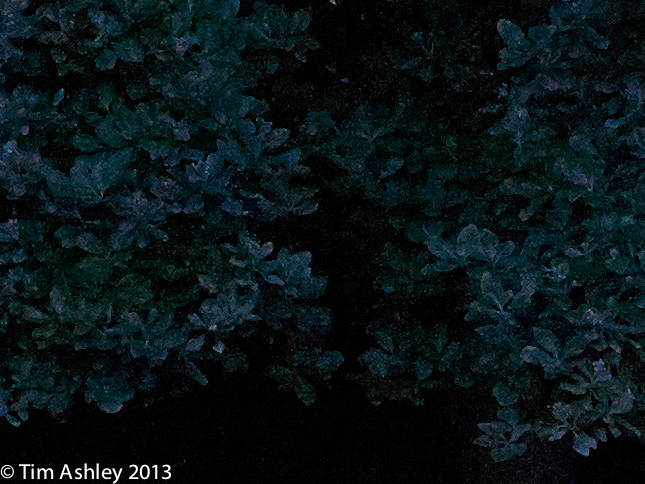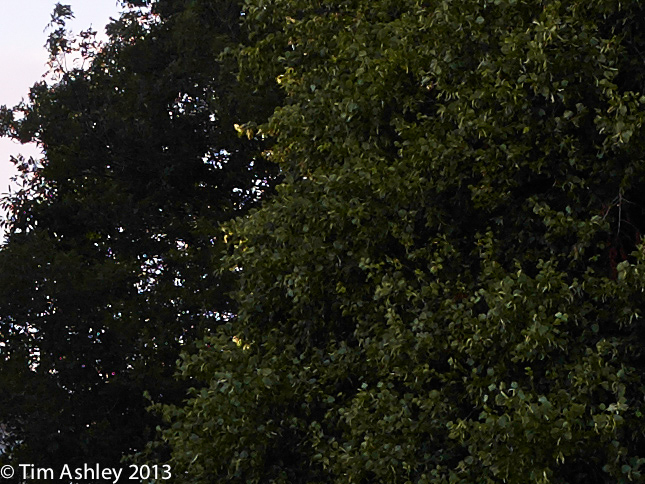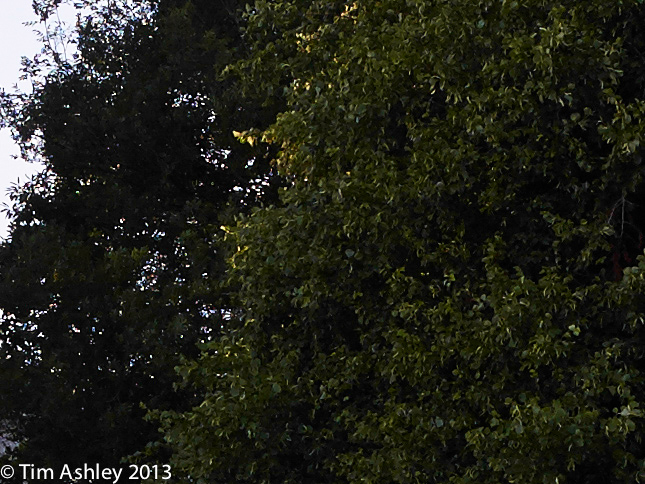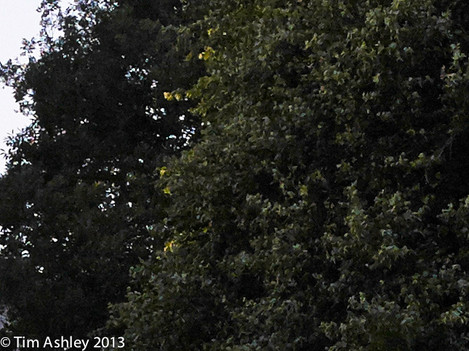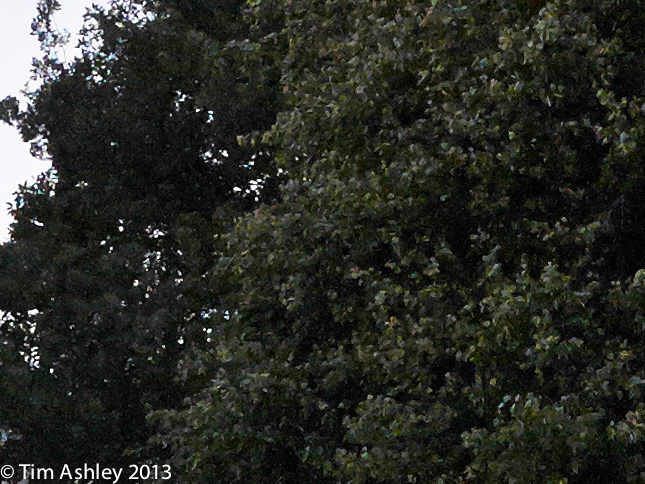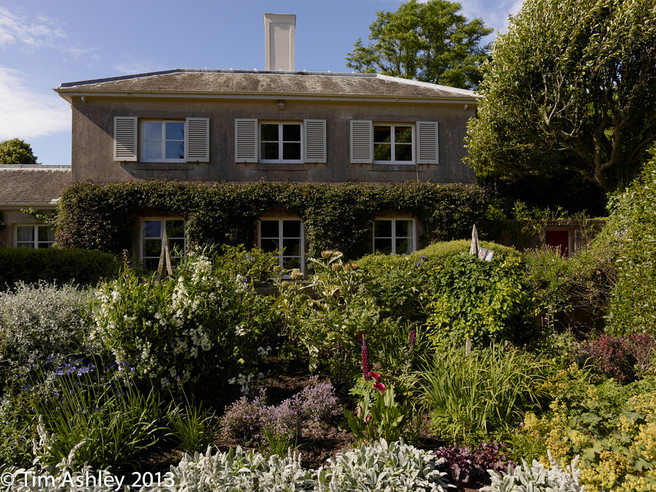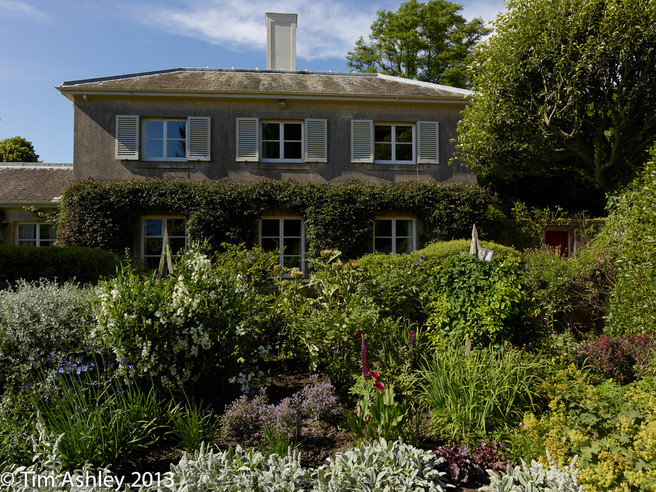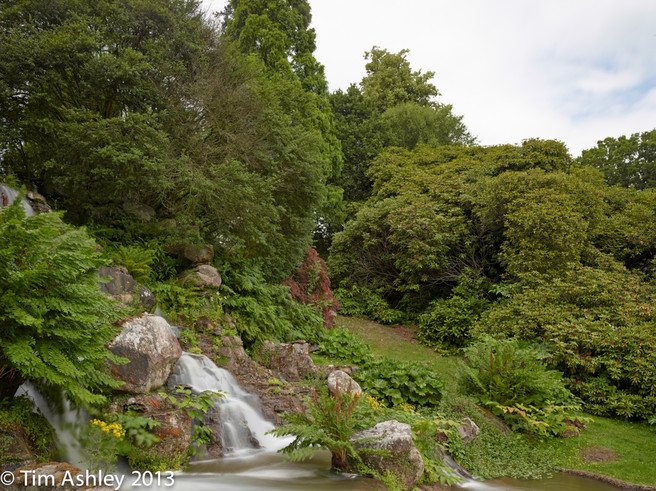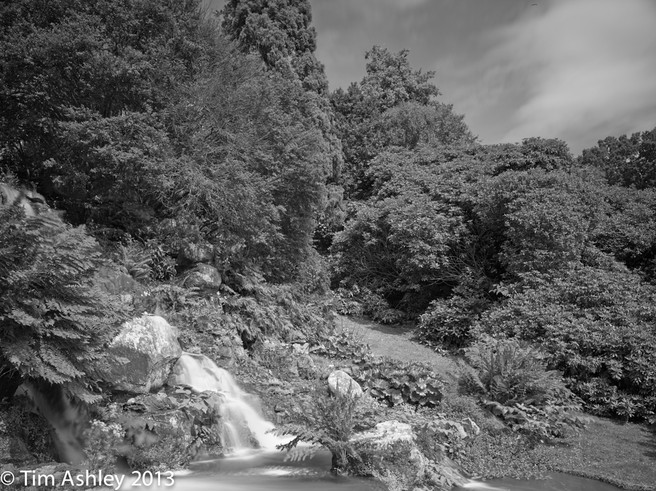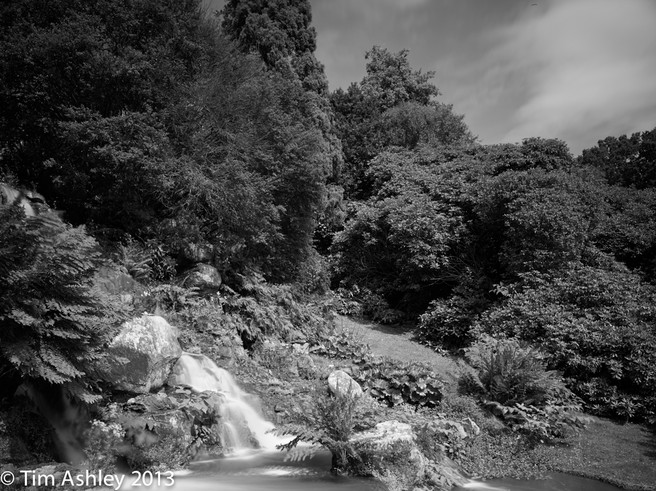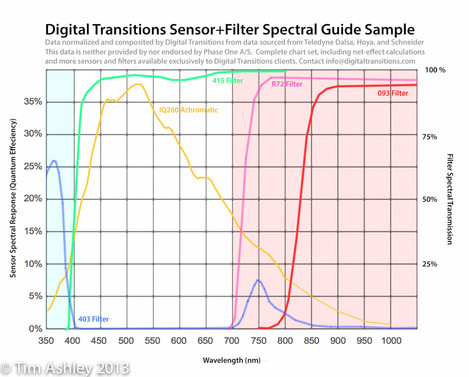Phase One's new Flagship Cameras
A Little Joke
There's an old photographers' gag with a great moral for my field test of the IQ260 and IQ260 Achro backs from Phase One.
A Time Life photographer is sent to cover a huge bush fire. His instructions are to meet a light aircraft pilot at the landing strip. Arriving in a hurry as the nearby landscape blazes, he hops into the waiting Piper and shouts "Go go go!" to the pilot. Airborne (and slightly worried by the craft's dangerous ascent) he barks, "don't fly directly over the fire, go round to the west so the sun is behind us."
"Why?" shouts the pilot.
The photographer brandishes his camera and replies sarcastically, "Because I'm a bloody photographer, I'm here to take pictures and I need the right bloody angle."
"You mean you're not the flight instructor?" says the pilot.
The moral of this story is, make sure you know what you're getting into.
Due to a communications mixup, I thought on taking delivery of these two delicious backs that they were of 'shipping' image quality. I shot accordingly, hundreds of files, testing for ISO performance, colour rendition, image quality etc. and then when I was done shooting I discovered that the Achro I had been using was not a 'shipping IQ' unit at all and that the physical build of both backs was not representative of shipping units either. Some of my conclusions are therefore provisional, and some of the issues I encountered with both backs are unlikely to affect end-users. Regardless, I can tell you here and now that any extra performance will be a bonus - because both the units I tested gave enviable results.
A Little History
When Phase One switched from Kodak to Dalsa sensors, ultra-long exposure times bit the dust. For most of us, including me, that really didn't matter much but for some users, especially some architectural and landscape practitioners, it was a real issue. A P45+ could go as long as an hour without breaking sweat but the P65+ and then the IQ140 and IQ160 were limited to one minute, with the IQ180 capable of two minutes. For some people this really wasn't enough. Accordingly, Phase and Dalsa set quietly to work with the aim of creating a 'best of both worlds' sensor: something that had a cart-load of pixels, could do still do Sensor Plus 'pixel binned' exposures for better high ISO performance, and which added back the long exposure abilities of the old Kodak sensors. Slowly but surely the technical obstacles were overcome and the culmination of the process was the announcement of the IQ260 and the return of the one hour capture. Actually, make that two hours or more: dark frame capture at least doubles the original exposure time. And on top of this, DR has been improved by a claimed 1/2 stop over the IQ160 making it effectively as good as the IQ180.
In a parallel historical thread, Phase was listening carefully to those customers who, jealous of Leica Monochrom users and misty-eyed for the old 'special order only' Achromatic Plus, wanted something that didn't 'do' Bayer and did 'do' the Infra Red part of the spectrum. A true Achromatic sensor with no Bayer array (and therefore no demosaicing and interpolation) and no IR filter on-sensor. A back that would, like Foveon sensors, give the purest images that digital technology can provide. And so the IQ260 Achro came to be. And it is marvellous.
Lastly, Phase has added, for all IQ2XX backs, a truly useful update to its iPad Capture Pilot app: the backs can create AdHoc WiFi networks (or join external ones) and send captures to you iPad for fully zoomed review and thumbnail tagging. More on this later. But don't expect to be able to retro-fit this feature to your existing IQ1 series backs using a WiFi memory card; for various reasons that just won't work.
A Little Learning #1: The IQ260 Achro
There's some stuff you need to know before you flex your shutter finger:
The IQ260 Achro, quite aside from issues of bayer arrays and IR filters, has a different sensor from that in the IQ260. In practice this means there are three things you need to know:
- It doesn't have a long exposure mode (max 2 minutes)
- It doesn't have Sensor Plus mode
- It does not offer Live View (and you'd have to dig deep to find that out from the marketing bumpf)
In addition, those unfamiliar with Achromatic sensors need to be aware that, since non-apochromatic lenses focus different wavelengths of light to different planes, you will need to get used to using filters on most or all of your lenses. For example, an unfiltered shot will be sending UV and IR and visible spectrum light to the sensor and your lens will likely be focussing these last two to different distances from the rear element of the lens.
The result can look like a reverse focus stack, combining in- and out-of focus frames into one image. (Note: all wavelengths focus to slightly differing planes but modern, well-corrected lenses minimise the effects of this. When you see chromatic aberration, for example, it is a failure to fully compensate for this effect. But even well-corrected modern lenses do not generally correct for the more extreme differences in focus requirements of the IR spectrum, and unless one uses very tight band pass filtration, some degree of focus dispersion will occur and no one 'focus offset' will be exactly correct.)
In practice, this means that an unfiltered shot will if there are any IR reflecting items in the subject, always be a little soft, however carefully focussed. If you bang on a Phase TG-1 filter or similar in order to cut out the IR spectrum then you can focus as usual. But if you use an IR pass filter (such as a Lee #87 which transmits only from 730nm upwards) then your normal focus methods will fail you: for example, in normal use my Rodenstock 40HR is generally reliable for mid to far subjects at F8 and a focus setting of around 50 metres on my IQ180. But when shot on the Achro with all visible light blocked, the lens needs to be set to around 5 meters if good focus is to be achieved for the same subject.
A corollary of this is that you might need a different approach to DOF calculations (depending on your lens/filter/aperture combination) in order to effectively pull your 'passed' spectra together into an acceptable circle of confusion. However, there is no known publicly available algorithm for determining the exact focus adjustment required since this varies according to subject distance, the exact cutoff/pass characteristics of the filters used and the focal length of the lens. Further, different lenses of the same focal length may behave differently, according to the kind of design, glass and coatings used. See Technical Note at bottom*
All this has one major implication when taken in combination with the lack of Live View on this back: the new iPad/Capture Pilot/WiFi setup is close to vital. You will need a very great deal of experience to get focus 'right' without it, or you will need to bracket focus extensively. The issue will be exacerbated if you use longer focal lengths or wider apertures and frankly, if you are a Scheimpflugger, you will simply have no option but to use an iPad: everything you know, all your favourite tried-and-tested ways of placing your 'wedge', will be obsolete. I know: I've tried.
One more thing on the use of iPads: keep that old pre-Retina iPad2 that you were thinking of giving to your niece. It has a screen resolution of 132ppi and this is at the upper limit of what I consider useful for judging focus critically. A 264ppi Retina iPad might half-choke on the data it has to render and will simply have too much resolution: it may make the files look great but they will be very hard to judge.
There are other factors to be aware of too: IR files can have noticeable central 'hotspots' (Phase think it relates to filter characteristics) but I have found that shooting an LCC frame can ameliorate this, as long as it is shot using the same filters as your intended capture.
Achro files, in general, require careful exposure techniques: instead of the Bayer luxury of blowing one channel and saving the day by finding some detail in another, you have but one channel and one chance: blow it, and you blow the shot. So, shoot with a very close eye on your histogram and your 'blinkies' - or suffer the consequences. And talking of 'capture considerations' the minimum ISO of the Achro is 200. This is fine when shooting with IR Pass filters since exposures tend to be longer due to the fact that you have cut all the visible light. But when shooting conventionally with a Copal shutter, it can be a PITA because of the maximum shutter speed of 1/500th. In practice, I had to resort to either waiting for the light to drop or to using an ND filter.
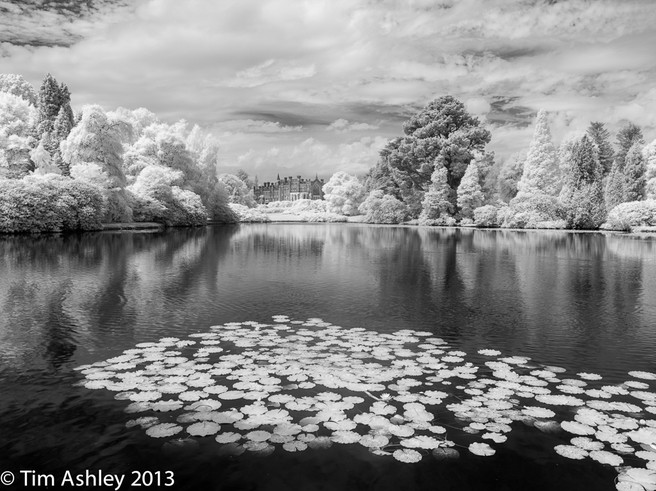
Achro with Rodenstock 40HR on Alpa STC, IR Pass and UV Cut filters. 10 rise and about 2 degrees tilt. Cropped and processed with LCC corrections and Levels tweaked as suggested below.
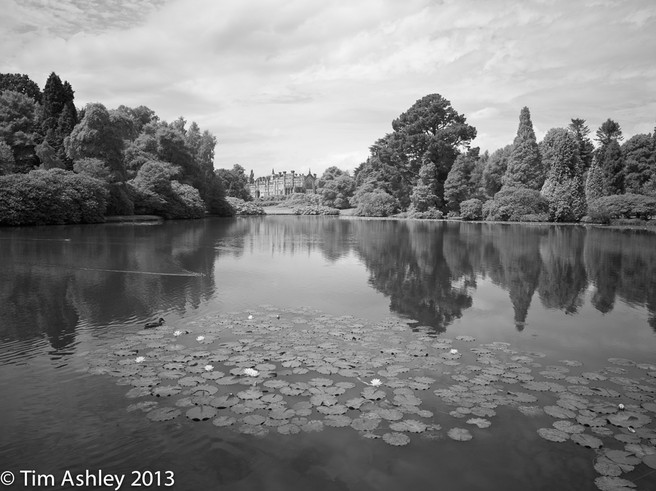
Just for fun, the same scene shot in 'normal' B&W on the 260 Achro with no filtration other than UV & IR Cut. Really not very exciting.
Talking of filters, consider this: you have a UV filter mounted. You decide to add an IR Cut filter, a yellow filter and then you find an ND is required too - and pretty soon you have a bad case of Filter Stack Vignetting - especially if you use a shade or hood. This happened to me several times. Filters, whether aiming for 'regular' or for IR effects, are a must for shooting the Achro, so make sure you have slim lines and keep your eyes glued to the iPad for signs of missing corners...
Processing can be a challenge too, especially for IR shots which can look very flat at first glance. My top tip, aside from using an LCC frame, is to start in Capture One's Clarity tool and bang it up to about 10, then go to the Levels tool and drag the Black and Highlight tabs to the exact left and right of the histogram respectively, then place the middle tab about two thirds of the way towards the highlight side. After that, it's season to taste.
Processing for visible spectrum shots is more conventional and I did not find any need for LCC shots, as long as I had an IR cut filter mounted. But I did find the process a little frustrating: I am accustomed to post-capture colour mixing when making B&W work. The upside of this is that you don't have to commit when you shoot. The downside is that you can get strange edge effects, noise and posterisation. For example, if you want a dark and contrasty blue sky against fluffy white clouds, you might just drop the blue slider when mixing a colour frame in B&W post processing. But with the Achro, you will shoot using a yellow, orange or red filter (depending on the extent of the effect you want and the desired colour response for other subjects in the scene) and get much cleaner results, albeit with less optionality 'after the fact'. Horses and courses.
Here are some further observations, but they must be regarded as provisional since the back I used was not of 'shipping' standard:
- IR shots render blue skies as close to black since a blue sky reflects little IR light. In effect, that part of the image receives very little exposure and even at base ISO can look a little noisier than you might expect. This might improve a touch in shipping units but to some extent, it simply 'goes with the territory' and can be cleaned up easily in post if desired.
- Resolution of a non-bayer shot is not higher than for the same sensor with a bayer array. It is exactly the same: each pixel is capturing luminance values, regardless of what is happening with chrominance. However, the cleaner imaging chain means that more detail is rendered in the final image and that creates the impression of higher resolution. My rough estimate is that a 60mp Achro shot has about the same ability to reproduce detail as does an 80mp IQ180 file converted to B&W and printed to the same size. Tonal transitions, however, are more subtle and continuous from the Achro back.
- Diffraction on both of the 260 backs kicks in at a slightly smaller aperture than on an 80mp back, because the pixels are physically larger. This means that whilst Rodenstock recommends using the 40HR at no more than F8, it is possible to go a bit tighter on the 260s. I estimate that when shooting with IR Cut filter, results are extremely good though F8 and even F10 but are acceptable when viewed at 50% even up to F14, though F16 is unambiguously a bit soft. When shooting with IR Pass, things change a little: F5.6 is truly the sharpest but F8 is still very good. F10 is ok-ish but beyond that some visible softness cuts in. In other words, diffraction seems to cut in earlier when shooting IR effect frames. I have spotted some odd effects that might be explained by the Technical Note at the end of this article, whereby IR Pass shots seem to have differing field curvature effects as one stops down. It is as if IR wavelengths are focussed somewhat differently at the edges of the frame at smaller apertures, as compared to visible light imaging with the same lens.
- I won't publish crops from my ISO tests because as noted, the IQ is not of shipping quality, but I will say that results looked eminently useable to 800 in IR Cut mode, and a bit smeary at 1600 and 3200. In IR Pass mode, the sky got a little noisy at 800 and smeariness cut in from 1600, but this smeariness can add quite a nice dreamy look to an IR shot - and one might actively seek this.
- I have heard from some sources that when shooting with an IR Pass filter, there can be a further focus complication: focus shift. This implies that, having found via iteration the optimal focus distance at which to set the lens for a given wide aperture shot, this distance might change as the aperture is stopped down in a way which is not typical of the same lens in 'normal' use. This might be the case with some lenses but my tests found it hard to spot such an effect though nearer detail seems to get proportionately less blurred at, say F16, than does further detail so there might be something in it. This might also explain the slightly different diffraction limits noted above. In any event, I suspect that all issues of focus and DOF when using an IR Pass filter will be quite specific to individual combinations of filter, lens, subject, aperture and distance and in my experience so far, 'suck it and see' is the only way to plough through the possibilities and get to where you want to be. Again, see the Technical Note at the end.
- Shots made with an IR Cut filter are so subtle in their tonal range and so un-in-your-face that they can look rather boring on screen, especially when compared to the easy drama of an IR shot. However, when processed and printed, the real benefits of the Bayer-less sensor become clear: the results look less digital.
A Little Learning #2: The IQ260
The IQ260 does have Live View. And Sensor Plus. And a minimum ISO of 50 (140 in Long Exposure Mode.) And there's far less need to shoot with filters mounted. It also focusses as expected and all your Scheimpflug 'moves' will work as usual. All in all it is a much easier proposition to shoot than the Achro. And despite the annoyances caused by a prototype sensor housing (startup glitches, sticking batteries) the results were great. In fact I was close to astounded at how good the LE mode was in terms of noise and colour rendition: I used to have a P45+ and that back was legendary for its clean long exposures but as far as I can see, the IQ260 is at least as good but with better DR and a lot more pixels.
It was great fun playing with longer exposures, something I rarely do, and it gave me real creative pleasure. And I was truly impressed with the flexibility and processing latitude of the Long Exposure files. Take a look at these two images:
The first was shot mid-morning at ISO 50 and 1/500th sec and the second in Long Exposure mode at ISO 140 and 28 seconds with an ND 3 (ten stop) filter just before dusk. Not only is the second shot more interesting, but it is very heavily processed. Here is what it looked like 'out of the can' apart from having had an LCC applied: it had to be quite underexposed so as to avoid blowing the sky.
And here is a 100% crop from the processed version:
In other words, even with long exposures at ISO140 and with an exposure of a very high DR scene biased in favour of preserving the highlights, the file can take a lot of processing and remain quite clean. It's also worth noting that this frame was shot with both 10 rise and some tilt, so the LCC will have taken some toll too.
Here are some further observations:
- In normal exposure mode, I would use it mostly at ISO 50 and 100. 200 is marginal and the results from 400 onwards start to look a little smeary to a critical eye. This is partly because the default sharpening and NR levels in Capture One are tailored to each ISO and more NR is applied at higher ISOs.
- In LE mode, I preferred not to go over IS0 400 for the same reason.
- In LE mode, the worst 'torture test' I could devise, a scene of cut flowers in every hue imaginable lit by nothing but candlelight, showed notable falloff in colour response for some particular shades but in general, results were really good.
- Diffraction testing indicates to me that I would happily use F10 and F11 if I needed the DOF, but that beyond that, a loss of detail is evident. It is tempting to compare these results to those on the Achro but I won't - to understand why, please read the testing notes below.
- LCC requirements are quite tame. Honestly, if a shot really matters I will always shoot an LCC frame but it is quickly evident that the IQ260 has much less of a problem with colour shading than does the IQ180. On the older, higher resolution back, LCC is mandatory with or without movements but on the 260, even with movements, the colour casts are slight.
Let us look at some crops to illustrate some of these points. First, the candle powered torture test. The first crop shows the colour rendition in indirect daylight the next morning (with a distinctly wilted look!) at ISO50. Next comes a Long Exposure Mode shot at ISO140 and 25 second exposure. Please note that this is not a noise test series - that will follow later. It is purely about colour rendition and it shows that with the best will in the world, if the light source lacks certain wavelengths then there's nothing that can be done to achieve colour accuracy. This is common sense, AFAIK applies to all systems, but shows the limitations of long exposure night shooting with spectrum-poor light sources. Needless to say, the daylight shot colours are pretty darned accurate...
Now let us look at a quick night series. The first, reference shot crop is in a mixed light and shadow area of a daylight capture at ISO50. Thereafter we have Long Exposure mode shots at ISO140/90 seconds, ISO 400/140 seconds and ISO 800/99 seconds made in what became close to total darkness. Please be aware that this field test was challenged by falling light levels so I had to estimate the correct exposure for captures during which the light was dropping, and allow for dark frame time too. Consequently the EV levels received by each frame differ and the conclusions that can be drawn need to be adjusted accordingly.
As you can see, the ISO800 frame is about half a stop underexposed relative to the other night captures, but my takeaway from plenty of other shots is that up to ISO400, the back produces very useable results when viewed at 50% or when printed, and even 800 is useable for prints of 300dpi or so. This is a very good result. One note to add for both of the above low light tests: just as I finished my time with the backs, Phase released a new firmware version which will henceforth be installed in all shipping units and which has an improved (and longer) dark frame method. I wasn't able to test this but you should probably assume some improvement to low light, high ISO and long exposure results.
Now some daylight ISO results. These are crops from a shadow area of a correctly exposed frame, shot ISO 50, 100, 200, 400 & 800 and at shutter speeds between 1/15th second and 1/500th second.
My feeling is that ISO 50 through 200 produces very good results but that detail and colour rendition suffer at 400 and ISO 800 should really be treated as a 'push' setting. But as always, if you can use ISO 50, do so: it delivers the cleanest results in the business.
On to colour rendition in daylight: here are two frames, shot minutes apart and white balanced from the same patch on the Color Checker. The first is from the IQ180 and the second from the IQ260. Some people I know of are considering making the 180/260 switch but are concerned about losing the legendary 180 colour rendition. On the basis of this quick comparison, I wouldn't worry - but I did find that the results from the 260 using AWB were a bit too warm for my taste and that I preferred those from the 180. I also noted that Capture One gives very slightly different defaults for Daylight WB on these two backs.
Lastly, a quick note on two physical changes to the backs themselves:
- The power button has been re-jigged so as to respond to a faster press, rather than the 'press and hold' of the IQ1 series. It feels nicer in use but seems more likely to turn itself on in your camera bag or to be accidentally pressed in use. Swings and roundabouts.
- The method of attaching and detaching the back from your camera body has changed: the 'old' way was to move the Lock slider (unmarked, I had to make an effort to remember which position was locked and which wasn't) and then press the release button. This allowed for one hand to operate the release, leaving the other to firmly hold the back. The downside was that the Lock slider could easily move in the bag leaving the back vulnerable to accidental detachment if the release button was inadvertently pressed. This has happened to me. But the downside of the new system is that it seems to need both hands to operate the slider/release setup, leaving the back detachment as a bit of a fumble. To me it feels more dangerous but some people might prefer it.
A Little Reflection
At the back of every reviewer's mind is the question, "would I buy this myself?"
If the answer is 'no,' that might merely be a reflection of the fact that the reviewer simply doesn't need the gear in question. And so it is with me. I have an IQ180 and the cost of switching to either of these backs would be quite high. But financial considerations aside, I would probably still not want to make the switch. Why?
- I loved shooting the Achro with the IR Pass filter, the results are huge fun and feel very 'creative' BUT I have a niggling sense that it's all a bit 'Instagram' - canned creativity that, if you are not careful, can result in your allowing the effect to carry the creative effort, rather than taking responsibility yourself. I will miss it, but I think I'll live. I did try faking similar IR effects from both colour and B&W files (best from colour files) using both colour channel mixing and Nik Effects and the results did not impress me...
- I loved the 'standard' B&W files from the Achro but in truth, I don't see any real gain in detail compared to a B&W processed IQ180 file. The extra resolution of the older back roughly compensates for losses to the Bayer matrix, even if the extremely subtle tonality of the Bayerless back can't be matched. But as the actress said to the bishop, I've had no complaints - and I'm not a hardcore B&W guy anyway.
- One thing I don't love about Achro shooting is the need to have a full array of coloured filters available at all times and to be willing to commit to a particular B&W treatment at the time of shooting. I am no purist and I prefer to capture the full range of shades and then mix the colour sliders later, when making my B&W processing decisions. I am willing to give up the last little bit of quality in order to retain this flexibility.
- Looking at the IQ260, I enjoyed the long exposures - but I found it pretty hard to find a subject that needed more than the two minutes that my IQ180 can offer and in general, I very, very rarely shoot longer than 30 seconds. Additionally, whilst I like the greatly reduced LCC requirements, I will always shoot LCC anyway and so the IQ180 continues to meet my needs. Bottom line, the IQ180 has about the same DR as the IQ260 but more resolution and I like that extra resolution. However, if you are a legacy owner of lenses (such as the Schneider 35XL) which have real colour shading problems on the IQ180, even when LCCs are used, then the 260 would be a good choice.
- The Wi-Fi/Capture Pilot/iPad combo is great. But it is of most use to those working with an art director (and tethering would still be my preferred option in that case) or those who are using extremes of movements (especially for Infra Red shooting) in order to get their Scheimpflug right. It would also be really useful for those who shoot with manual, long focal length lenses. I very rarely use extreme movements and I only use my 180 on an Alpa STC with Rodenstock 40HR, a lens which, used with a High Precision Focussing Ring and a Leica Disto laser rangefinder, is perfectly easy to focus with good accuracy.
In other words, I already have the right back for my needs. But for others, and you know who you are, one or both of these brilliant new backs might be 'just the ticket'. As it is, I am thinking of having my 180 converted to IR by Phase (yes, it can be done) so that I can get my 'novelty kick' of IR from time to time. I do hanker after that.
Finally, the same scene several ways. This is probably the first (and might well be the last) time I will ever 'do' a slo-mo waterfall. It really isn't my bag. To be blunt, I regard it as the greatest cliche known to photographic man. But it demonstrates some interesting things so here goes...
Click here to view 100% full size image
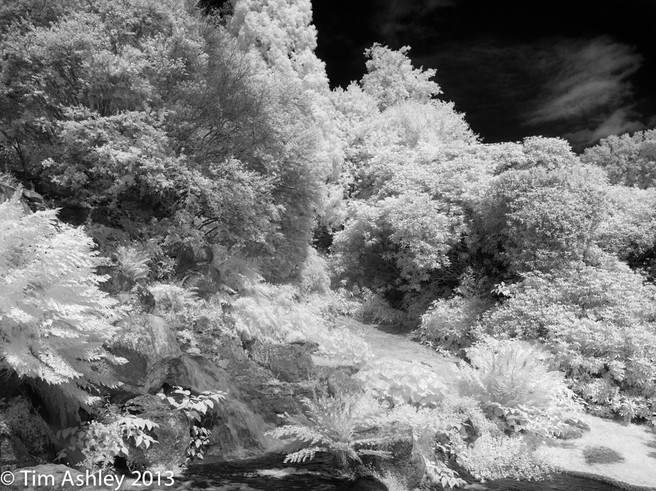
IQ260 Achro with IR Pass, ISO200. Just weird - the water reflects very little IR light and looks like snot. Not a good subject for this method. I couldn't use the ND filter to slow the snot down, because of filter-stacking-vignetting syndrome.
Click here to view 100% full size image
Click here to view 100% full size image
Click here to view 100% full size image
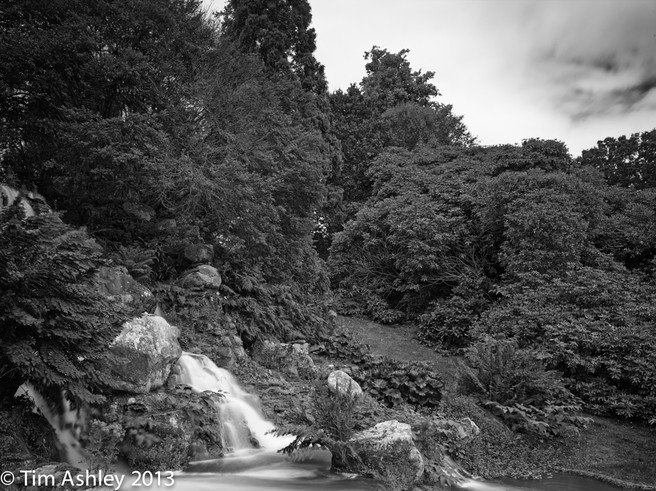
Derived from the first shot (in colour, top of series) and then mixed in C1's B&W Color Sensitivity tab to my taste, which is how I prefer to do it. But still quite boring, especially since the light had moved against me.
Click here to view 100% full size image
Please bear in mind that the full size images are 92% quality jpegs in ProPhoto colour space. If your browser doesn't support icc profiles the images may appear low contrast and unsaturated. You can download these and open them in a photo editing package if this happens.
Post-Script on Testing
A number of issues plagued my testing, though most of them related to the prototypical nature of some of the gear. I list them because they are relevant to what tests I was able to do and what conclusions I feel able to draw. I would like to add that this is a field test and not a lab test but that, in the absence of any current lab-type reviews of these backs, I did run some lab-ish tests. However, these were conducted in the field and not in the lab and the results reflect that - for good and for bad. One example of the limitations this imposes: I used a typical landscape setup, a 24mm equivalent lens on a field camera, and the copal shutter on this has only full stops, topped and tailed by 1/500th and B and T. That means that third-stop adjustments to shutter speeds (in order to match third stop aperture changes at fixed ISO) were not possible and that some scenes at some ISOs could not be shot because they would have required faster shutter speeds. So please regard my findings as 'observations' and 'experiences' rather than 'proofs'. DXO will no doubt come through with the latter soon enough.
- The IQ260 had the twin annoyances of a startup that often froze unless the battery was re-inserted and a battery compartment that was a bit too tight and would often require the battery to be prized out with a steak knife. This will certainly not affect shipping units but boy did it slow me down!
- The IQ260 also seemed to have an ISO at nominal 50 of between 1/2 and 2/3 of a stop faster than my IQ180 at nominal 50 and this made some comparisons difficult. These assessments are difficult because they can represent different curve distributions of differing dynamic ranges but judged by the highlights, this difference was pretty consistent. I expect that this resulted from the pre-production tuning of the back even though the sensor itself is a shipping quality version.
- The Adhoc WiFi connections needed for Capture Pilot to work in review mode proved extremely moody. Frankly, I gave up after a while. Then, just as my time with the backs was up, a new firmware version was released. I just had time to install it and discover that WiFi connection is now a breeze before having to hand the equipment back. But what I can say is that when it worked it was brilliant and I particularly liked the way you can zoom to 100% on a portion of an image and then tab directly to the same enlarged portion of the next image. It makes achieving critical focus so much easier.
- The virtual horizons in both backs were jittery and they disagreed with each other and with my IQ180. My own back was the closest to being 'right'. This is not going to affect shipping units but it does explain why some of the frames I shot were not correctly levelled.
- Each of the backs achieved optimal focus at slightly different points. It is for this reason that I didn't draw conclusions about the diffraction limitations of the Achro versus the 'vanilla' 260 despite the use of the exact same lens and body. Diffraction series were, however, achieved by extensive focus bracketing so I trust the conclusions I drew from them per back. My own 180 back mounts onto the Alpa via a carefully shimmed Alpa back adaptor but, short of purchasing two more back adaptors just for this test (at a vast cost) there was no way to shim each of the trial backs. Again, according to Phase this should not affect shipping quality units but frankly I doubt that: my IQ180 was fully paid for and needed shimming as, I understand, do many backs. So if you are planning on buying an Achro as an additional back, consider that you might need to throw in the cost of an additional back adaptor.
- There are a zillion other tests and comparisons I could have included (some of which I did actually shoot) such as Achro 'visible spectrum' shots with different coloured filters, compared to post-processed B&W images made from colour files. In the end I had to stop somewhere! So I am sorry if the particular thing that interests you isn't covered but do ask because I might have a view on it.
- It is a long time since I used so many filters stacked on top of each other. Not only do they sometimes vignette, but they also stick to each other like limpets on occasion. One hot day I had to dip an inseparable pair into a lake in order to chill-free them from each others' grasp. Factor in that filter fiddling with the Achro will cost you time and hair and buy the thinnest, best ones you can afford - and daisy chain them loosely!
*Technical Note
Doug Petersen at Digital Transitions, a major Phase One dealership in the USA, has kindly provided the following graph.
It is highly proprietary to Digital Transitions and unique in that it shows the Sensor Spectral Response 'normalised' to the spectral transmission of some oft-used filters. As it is, this graph gives a good idea of how much light the sensor will be able to 'see' at certain wavelengths with certain filters, thereby allowing the user to get a good sense of the sorts of relative shutter speeds they might need. But Digital Transitions can also produce (for their customers only) focus dispersion charts which will give a good guide as to the degree of the defocus effect of a given filter/lens/aperture combination. I believe that this does not answer questions as to how much focus adjustment is needed to a given lens when switching from visible to IR spectrum shooting but rather, allows the user to estimate which combinations of gear and aperture will 'tighten' the breadth of spectra passed to the sensor, thereby minimising the effect whereby images shot with broad spectral ranges are soft due to differing parts of the spectrum focussing to different planes.
Here is a useful quote from Doug that illustrates the sort of further information his customers will be able to access:
"For a Schneider 35XL, an IQ260 Achromatic, and a R72 filter the extended band of IR will require an offset to DOF calculations by a margin similar to using f/14 rather than f/8. This is due to the requirement to cover the increased spread in the depth-of-focus across the captured spectral range as compared to a standard visible-only capture. Even with appropriate offset for the plane of focus and adaptation of the aperture values used for DOF calculations rendering of detail will vary at the extremes of plane of focus for objects with different spetral reflectivity and at the outside of the image circle, especially when those subjects have hard edges or high-frequency detail. This is the monochromatic IR equivalent of chromatic aberration, but can be comparatively aesthetically pleasing insofar as it creates a diffuse glow rather than a halo of errant color. If desired, a reduction in this effect (towards a more 'cleanly sharp' image) can be achieved by selecting lenses with better correction beyond 700nm, or by careful matching of the filter selected to the response of the sensor being used. For instance there are several filters which 'leak' a narrow range of IR; normally this is considered an undesirable attribute as these filters' stated purpose is not IR photography, but the narrow and steeply attenuated IR transmission can provide an unusual solution to the problem of sharply capturing IR images with lenses which are not corrected in that IR range."

